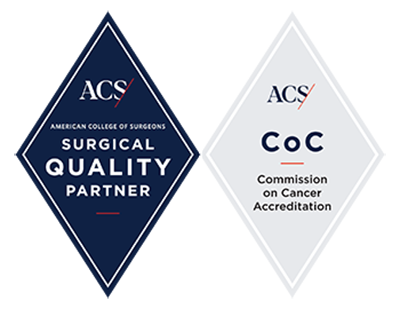Lumpectomy for Breast Cancer

Lumpectomy is the most common surgical treatment approach for breast cancer. Usually, this breast-conserving surgery is followed by four to six weeks of radiation therapy to target any remaining microscopic cancer cells and reduce the risk of recurrence.
Why is lumpectomy performed?
Also known as partial mastectomy, lumpectomy is performed to remove cancerous breast tissue while preserving as much healthy tissue as possible. The amount of tissue removed during the procedure can vary widely based on the location, size and stage of the tumor.
Who is a good candidate for lumpectomy?
A good candidate for lumpectomy has an early-stage breast tumor and would like to maintain the natural look and feel of their breast. In general, lumpectomy may be a good option if:
- A single tumor is confined to less than one-third of the breast tissue.
- After the tumor is removed, the remaining tissue will be sufficient for the surgeon to reshape the breast.
- The tumor is small relative to the overall size of the breast.
- The patient is a candidate for follow-up radiation therapy; e.g., the patient is not pregnant, does not have lupus and has not previously had radiation therapy delivered to the same breast.
In general, breast-conserving surgery such as lumpectomy is not an option for treating inflammatory breast cancer, which usually affects a significant amount of breast tissue and skin.
How to prepare for lumpectomy
In preparation for lumpectomy, the patient will be advised to undergo various preoperative evaluations, including blood work and imaging, such as a mammogram or breast magnetic resonance imaging (MRI) scan. When the results are available, the patient will meet with the surgical team to discuss the procedure, anesthesia and postoperative care. The patient will be provided with detailed instructions on how to stop or adjust their medications, make any necessary lifestyle changes and fast before surgery.
To help ensure a smooth and successful surgical procedure and recovery, the patient should arrange transportation to and from their medical appointments as well as any support they may need at home afterward.
What happens during lumpectomy?
Usually, lumpectomy is a short outpatient procedure that may be performed with local anesthesia and moderate sedation, although some patients receive general anesthesia. After making an incision in or around the breast, the surgeon will remove the tumor along with a slim margin of surrounding healthy tissue. The goal is to eliminate the cancer while keeping the unaffected breast tissue intact. During the procedure, the surgeon may place small markers at the lumpectomy site to help a radiation oncologist deliver follow-up radiation therapy more precisely.
The tissue removed during lumpectomy will be sent to a lab for microscopic examination by a pathologist, who can identify cancerous cells. If the pathologist does not find any evidence of cancer, they will report a negative (clear) margin to indicate that all the cancer has likely been removed and no further surgery is needed. On the other hand, if the pathologist finds cancerous cells, they will report a positive margin to indicate that more surgery may be needed to eliminate the cancer.
ACS Surgical Quality Partner for 30+ Years
Continuously Accredited by the American College of Surgeons Commission on Cancer since 1989 for our commitment to providing comprehensive, high-quality and multispecialty patient-centered care.
What are the risks and possible complications of lumpectomy?
Like any surgery, lumpectomy involves some risks and potential complications, such as infection and excessive bleeding. However, this commonly performed procedure is proven to be highly safe and effective. While everyone heals at their own pace, most patients fully recover from lumpectomy within two weeks.
What to expect during recovery from lumpectomy
After lumpectomy, the patient will be moved to a recovery room, where they will be monitored until they are cleared to go home, usually on the same day as the procedure. The surgical team will provide detailed postoperative instructions on:
- How to recognize signs of infection and when to call the surgeon
- How to change the surgical dressings and care for the incision site
- How to manage postoperative pain and swelling
- When to begin targeted exercises to help prevent shoulder stiffness
- When it will be safe to shower, wear a bra and resume daily activities
How effective is lumpectomy?
Lumpectomy can be effective for treating early-stage breast cancer, aiming to remove the tumor while preserving most of the breast tissue. That said, its effectiveness can vary depending on factors such as the location and size of the tumor and whether the surgical margins are clear.
When combined with radiation therapy, lumpectomy has survival rates comparable to total mastectomy (removal of the entire breast) for early-stage cancer. This breast-conserving approach can effectively reduce the risk of cancer recurrence in the treated breast while allowing for a better cosmetic outcome, making it the preferred treatment option for many patients.
Benefit from world-class care at Moffitt Cancer Center
If you would like to learn more about lumpectomy and other types of breast cancer surgery, you can request an appointment with a specialist in Moffitt’s renowned Don & Erika Wallace Comprehensive Breast Program by calling 1-888-663-3488 or submitting a new patient registration form online. We do not require referrals.
Helpful Links:

